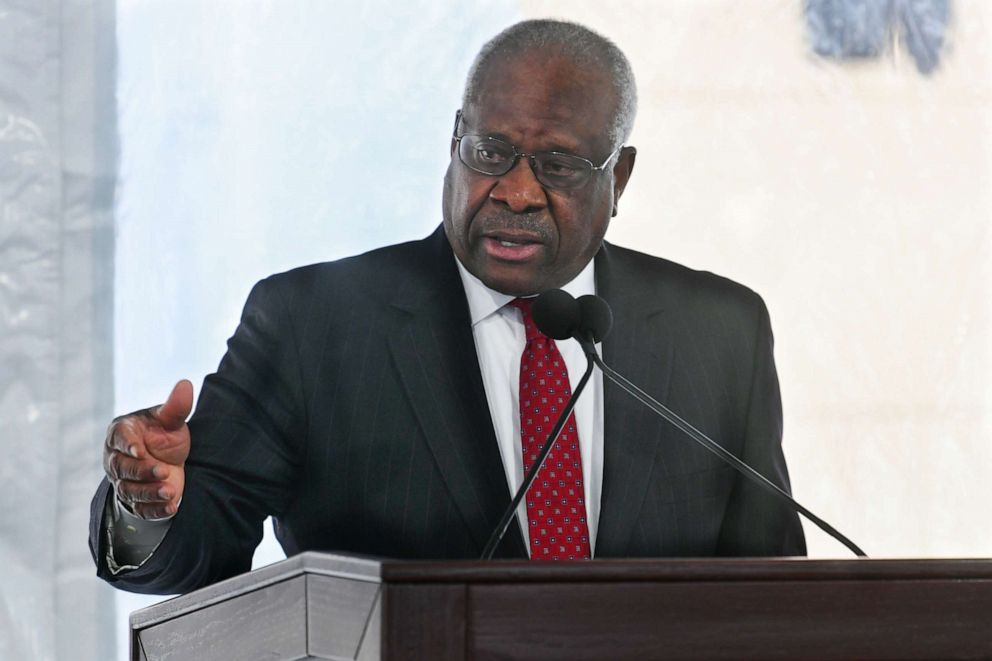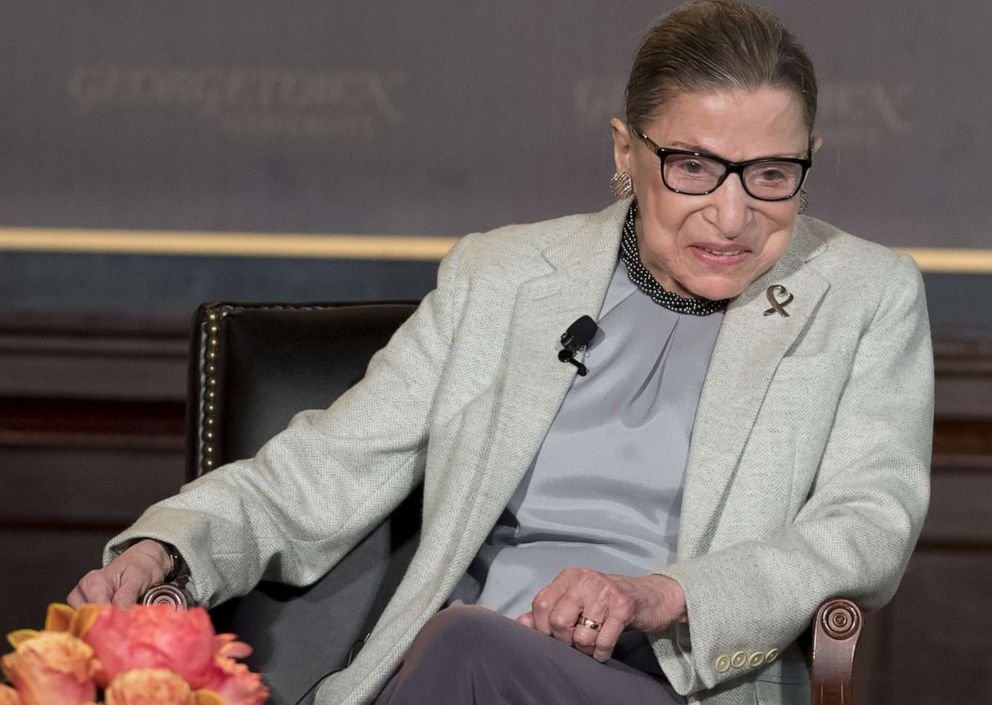Clarence Thomas captivates with 63 questions on Supreme Court livestreams
The court's historic live oral arguments were a riveting listen for thousands.
The coronavirus pandemic introduced America to its Supreme Court in action, and millions had reason to be riveted by what they heard.
An extraordinary two weeks of livestreamed oral arguments by teleconference featured an uncharacteristically loquacious Justice Clarence Thomas; the indomitable Justice Ruth Bader Ginsburg phoning in from a hospital; and a mysterious toilet flush on an open line that became a viral whodunit on social media.
"The fact that we're mostly only talking about a toilet flush less than two weeks later is a sign that this livestream experiment was a huge success," said Gabe Roth, executive director of Fix the Court, a nonpartisan watchdog group.
Tune into ABC at 1 p.m. ET and ABC News Live at 4 p.m. ET every weekday for special coverage of the novel coronavirus with the full ABC News team, including the latest news, context and analysis.
In addition to theatrics, the public heard an ideologically fractured court searching for answers to controversial legal questions that touch multiple aspects of American life -- from U.S. foreign aid and employment at religious schools, to robocall debt collection, women's contraception coverage and rogue delegates to the Electoral College.
"On balance, it was a very successful experiment," said ABC News Supreme Court analyst Kate Shaw, a Cardozo Law professor and co-host of the "Strict Scrutiny" podcast. "Many Americans were able to witness a key aspect of the court's work for the first time, and that in itself was highly valuable."
On Tuesday alone, when lawyers for President Donald Trump argued that his financial records should be kept secret in defiance of subpoenas, roughly half a million listeners accessed the court's live audio stream, according to data compiled by SCOTUSblog.
They heard Thomas ask 17 questions that day -- nearly six times as many as the famously silent justice asked in public arguments over all the last 14 years, according to an ABC News analysis. Before this month, Thomas hadn't asked a question since March 2019.

"The biggest positive of the sitting was Justice Thomas' active participation in the arguments," said Joseph Palmore, a former assistant Solicitor General during the Obama administration and Supreme Court litigator at the Washington, D.C. firm Morrison & Foerster. "He is a skilled and substantive questioner, and his colleagues often picked up on his questions to ask follow-ups."
All told, Thomas asked 63 questions during the livestreamed arguments, the ABC News analysis found.
"Justice Thomas has complained that oral arguments are too chaotic; the justices constantly interrupt each other. Now, each justice has a set amount of time to ask questions. The process is more orderly, and Thomas felt comfortable asking questions," said Josh Blackman, constitutional law expert at the South Texas College of Law.
The typically free-flowing and raucous debate of in-person Supreme Court arguments was a casualty of the new format, in which Chief Justice John Roberts called on the associate justices in order of seniority to ask their questions in three-minute increments, without interruption from other justices.
"I was pleasantly surprised how normal the arguments became. There was no grandstanding," Blackman said.
Not everyone thought the new format was effective or fair.
Lyle Denniston, a veteran Supreme Court journalist of more than 50 years, complained on Twitter that Roberts' strict time-keeping -- sometimes interrupting speakers mid-thought to move on -- was a disservice to thoughtful consideration of each case.
It's "obvious that (the junior justices) are trying to make this work, but also obvious that it can't," Denniston tweeted. "Hope that someone in academe will do deep study on just what's wrong with sequencing so that's ended forever. Oh for the rapturous joy of cross-talk!!!"
The oral arguments, scheduled for 60 minutes apiece and typically capped at that time, ran overtime consistently in May as Roberts ensured each justice had a chance to question each attorney in the round-robin by phone. Some critics suggested that allowance disadvantaged some parties in the cases where a Trump administration lawyer also joined as a "friend of the court," and had a full round of questions dedicated to their views.
"If the Justices decide to continue with remote arguments in the fall, I hope they'll consider doing it with video, not just audio; I also hope they'll consider changing the procedures so that the justices can jump in to follow up on lines of inquiry or argument, rather than sticking to rigid seniority order, as they did during this session," said Shaw.

In mid-April, the court took the historic step of scheduling oral arguments by phone -- and livestreaming them to the public -- after social distancing requirements imposed by public health authorities caused the delay of more than a dozen cases amidst the COVID-19 outbreak. It's not clear how soon the justices will be able to take the bench together again.
Six justices are 65 or older. The oldest, Ginsburg, turned 87 in March. Several have underlying health conditions, putting them at heightened risk in the pandemic. Court spokeswoman Kathy Arberg said, aside from Ginsburg's brief hospitalization for a "benign gallbladder condition" this month, all remain in good health during the outbreak.
"Whether the court will continue livestreaming after it returns to the building is a huge and open question," said Palmore.
Transparency advocates are hoping the justices will be encouraged by the public's response -- particularly a general lack of partisan controversy around their arguments -- and continue the practice of allowing all Americans to listen live to future proceedings.
Just 50 of the 439 seats in the courtroom at the Supreme Court are available for members of the public, who often have to stand in line for hours ahead of time for a chance at a ticket, according to SCOTUSblog. Prior to this month, the court would only release audio of arguments online on a weekly basis.
The court is next scheduled to convene for oral arguments in October.
"I know that these things aren't always easy, they're ripe for technical glitches," said Roth, "but it went very well, and in terms of access, I loved it."
The court now turns to the business of delivering a slate of high-profile decisions on the Deferred Action for Childhood Arrivals program, LGBT discrimination, abortion, contraception, the Electoral College and presidential power all by July.
What to know about the coronavirus:
- How it started and how to protect yourself: Coronavirus explained
- What to do if you have symptoms: Coronavirus symptoms
- Tracking the spread in the U.S. and worldwide: Coronavirus map




